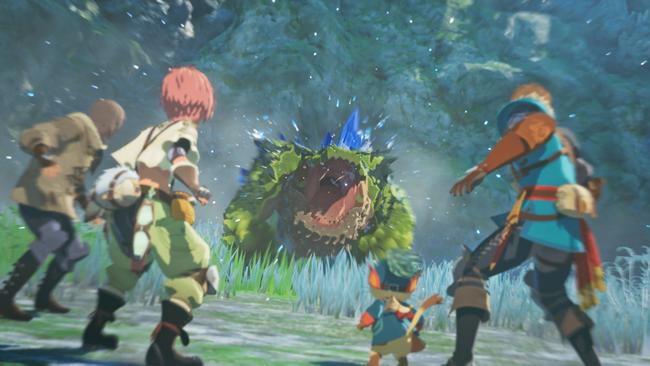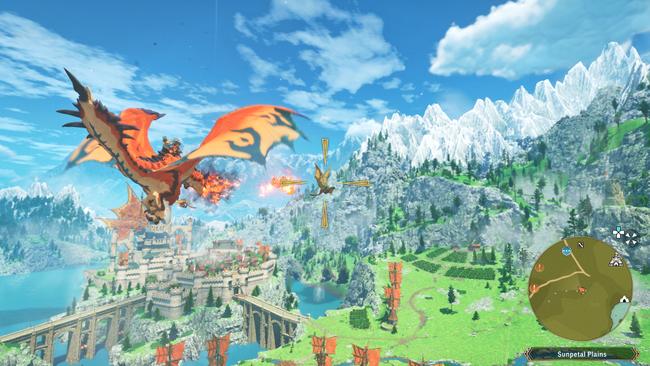
Monster Hunter Stories 3: Twisted Reflection continues the series' transition to a more methodical RPG
It's clear that Capcom well and truly wants to blaze new trails with Monster Hunter Stories 3: Twisted Reflection. While some of that was obvious from the reveal trailer, actually sitting down to play the game is something else entirely. While we only had a chance to play about an hour of the upcoming monster-raising RPG, it's what Capcom decided to showcase at Tokyo Game Show 2025 that tells a tale of a very different RPG than that of its predecessors.
Despite the series having "story" in the title, it's probably not that much of a surprise that neither of the two previous Monster Hunter Stories' narratives were especially deep; players take control of a Monster Rider which befriended a Rathalos, Ratha, and set off on a journey. The main character themselves didn't matter as much as the Rathalos they rode, and how the Monster tied into the story. Both previous games had silent protagonists, and as such Navirou acted as a surrogate to narrate and commentate on story beats where the main character could not. The end result was something goofy, and serious moments were almost impossible to take seriously thanks to that contrast of emotions.
While I can't say for sure that they'll stick the landing, it's abundantly clear that the team is aiming for a more serious and intimate story this go around. For one, the protagonist this time around is voiced, with their own distinct personality; Navirou and his antics, as a result, are nowhere to be found. Instead another Felyne named Rudy takes his place, with a considerably more orthodox design and solemn demeanor. Early on its established that the riders in this game take up the role of wildlife conservation by safeguarding endangered species in the wake of a mass extinction event targeting monsters ever since the prevalence of encasing Egg Quartz cocoons ensnaring monsters within started appearing with more frequency in recent years - contaminating the environment.

It's a very different vibe, and sets a distinct tone. Not only is the world of Monster Hunter Stories 3 set along the backdrop of two nations with tensions worsening by the day, but an ecological disaster has been ravaging the land for years on top of it all - and, perhaps, this may even be connected to the tensions among these neighboring nations. Never in a million years would I have expected a Monster Hunter spinoff to take such an approach, and the fact that it has leaves me equally intrigued to see how things evolve from here.
There's an ambition and a depth to the story they're attempting to portray, and much the same can be said about the gameplay changes made to the battle system. Much as Monster Hunter Stories 2 allowed played to equip 3 weapons, players can also equip 3 in Twisted Reflection. What has changed, however, is that weapon skills no longer use the same energy that allows you to ride your Monstie; instead, the new Stamina Meter determines how often you can utilize non-basic attacks. At a glance, this should give extra focus to each weapon's playstyle, and how to efficiently make use of them. Now that you're not beholden to only one resource, it would only make sense if the game eventually taxes players to consider both at the same time.
Even with what we can only assume is a very early game boss fight in the Feral Chatacabra tasks players with choosing between two important targets; Feral monsters come infected with stones that empower their attacks, and yet will automatically counter anything directly targeting the stones. The stones become vulnerable when the Chatacabra coats its arms, but if you are unable to break its back in-time the buffs to its arms can become a very dangerous proposition. The demo does its best to stress the vital importance of determining how to tackle a tough situation from the correct angle, which includes damaging body parts with the corresponding attack type in order to more efficiently stun enemies.

It's not just the scope of the story and the combat that's expanded, either; even the singular hub area we got to explore was notably larger than Stories 1 or 2, with multiple waymarks scattered across the plains waiting for us if not for the pesky invisible barriers barring my path to showcase the constraints of the demo. In the distance Gypceros fly in the air, which a tutorial helpfully tells us we could knock them out of the air with a breath attack if our aim was true. In terms of scope, and the mechanical improvements to the battle system, this demo was a major success - yet questions do remain elsewhere.
For one, what changes have been made to the Monstie system? How have genes evolved and been adapted? While Stories 3 is undeniably targeting a more mature tone, how far does that go? Another question revolves around performance; we got the chance to play the game on both the Nintendo Switch 2 and PlayStation 5. The game looks and runs excellently on the PS5 already, and while there are hiccups with the Switch 2's performance, it's already impressive with plenty of time before launch. What about PC and Xbox performance?
While I can't say for sure we'll be getting answers to everything before launch, something tells me this won't be the last time I get a chance to play Monster Hunter Stories 3 prior to its release on March 13, 2026. Capcom's 2026 is looking to be a legendary run, and Monster Hunter Stories 3 is shaping up to be a significant part of it. I can't wait for my next chance to check it out.